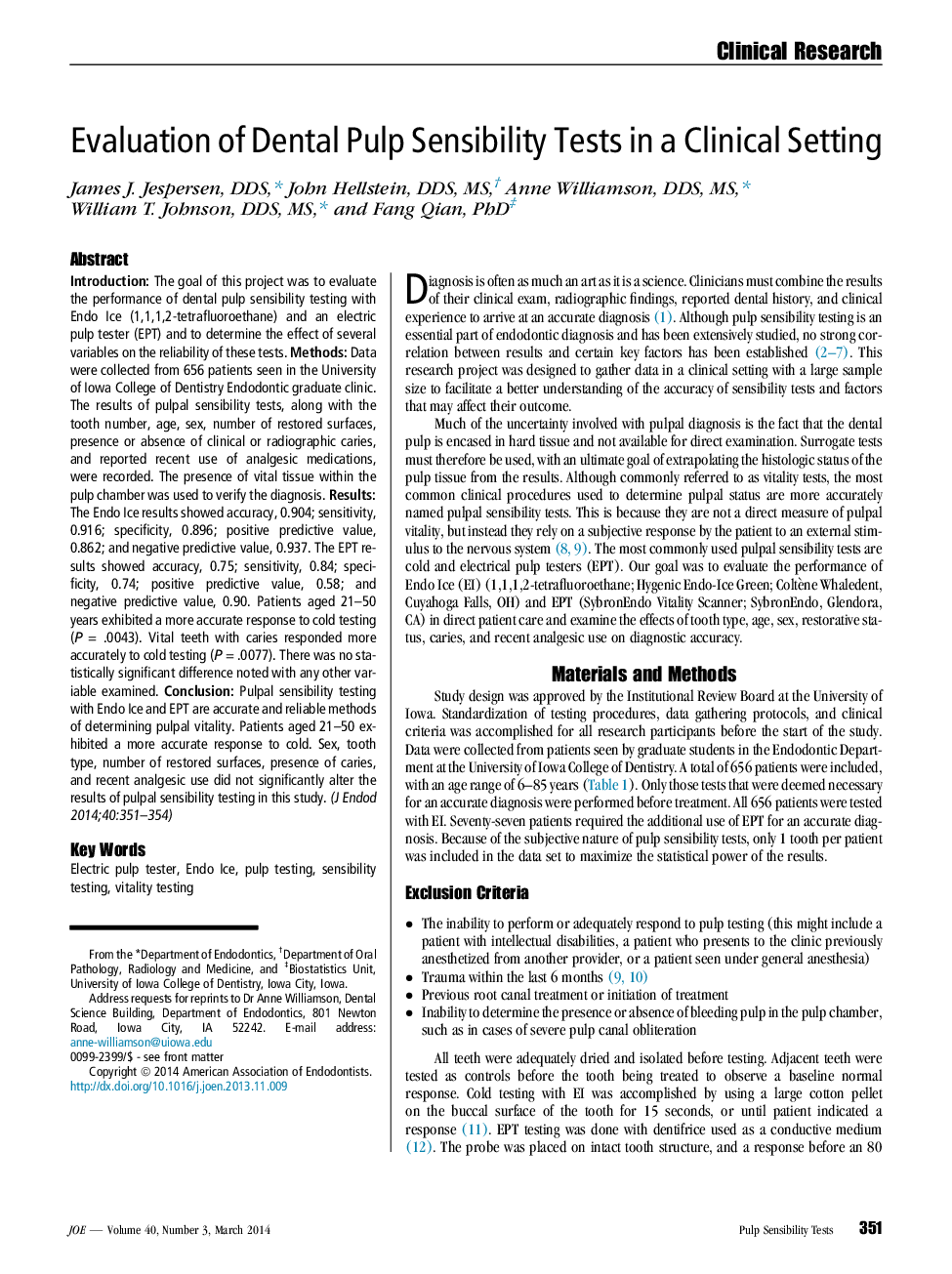| Article ID | Journal | Published Year | Pages | File Type |
|---|---|---|---|---|
| 3148564 | Journal of Endodontics | 2014 | 4 Pages |
IntroductionThe goal of this project was to evaluate the performance of dental pulp sensibility testing with Endo Ice (1,1,1,2-tetrafluoroethane) and an electric pulp tester (EPT) and to determine the effect of several variables on the reliability of these tests.MethodsData were collected from 656 patients seen in the University of Iowa College of Dentistry Endodontic graduate clinic. The results of pulpal sensibility tests, along with the tooth number, age, sex, number of restored surfaces, presence or absence of clinical or radiographic caries, and reported recent use of analgesic medications, were recorded. The presence of vital tissue within the pulp chamber was used to verify the diagnosis.ResultsThe Endo Ice results showed accuracy, 0.904; sensitivity, 0.916; specificity, 0.896; positive predictive value, 0.862; and negative predictive value, 0.937. The EPT results showed accuracy, 0.75; sensitivity, 0.84; specificity, 0.74; positive predictive value, 0.58; and negative predictive value, 0.90. Patients aged 21–50 years exhibited a more accurate response to cold testing (P = .0043). Vital teeth with caries responded more accurately to cold testing (P = .0077). There was no statistically significant difference noted with any other variable examined.ConclusionPulpal sensibility testing with Endo Ice and EPT are accurate and reliable methods of determining pulpal vitality. Patients aged 21–50 exhibited a more accurate response to cold. Sex, tooth type, number of restored surfaces, presence of caries, and recent analgesic use did not significantly alter the results of pulpal sensibility testing in this study.
